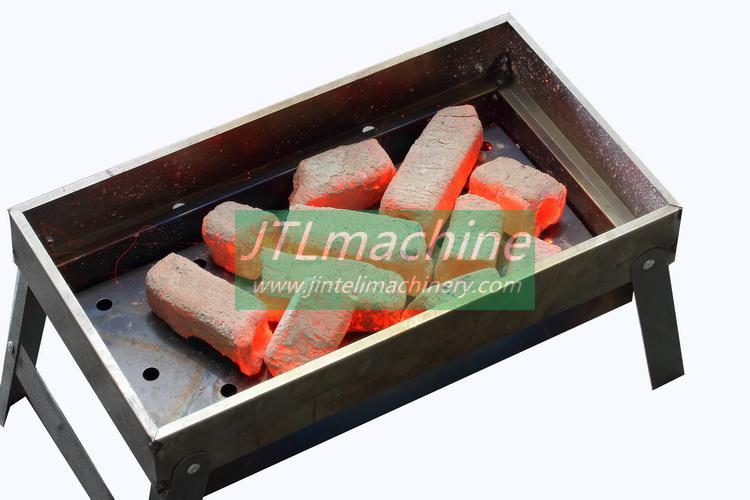تعظيم الكفاءة: كيف أحدثت آلات صنع نشارة الخشب ثورة في معالجة الأخشاب
من حيث التطبيقات العملية، فإن نشارة الخشب الناتجة عن هذه الآلات تجد استخدامات عديدة في مختلف الصناعات. يمكن استخدام نشارة الخشب كمادة خام في إنتاج الألواح الحبيبية، أو MDF (اللوح الليفي متوسط الكثافة)، أو غيرها من المنتجات الخشبية المركبة. كما أنها تُستخدم بشكل شائع كمواد للفراش في تربية الحيوانات، مما يوفر سطحًا مريحًا وممتصًا للماشية والدواجن. بالإضافة إلى ذلك، يمكن أن تعمل نشارة الخشب كعامل ضخم في عمليات التسميد، مما يساعد في عملية التحلل وإثراء تعديل التربة الناتج.
بخلاف نشارة الخشب، تتمتع بعض آلات صنع نشارة الخشب المتقدمة بالقدرة على ضغط جزيئات الخشب إلى كتل أو قوالب كثيفة. توفر هذه المنتجات الخشبية المضغوطة العديد من المزايا مقارنة بنشارة الخشب السائبة، بما في ذلك زيادة الكثافة وتحسين خصائص المعالجة والتخزين وخصائص الاحتراق المحسنة. تُستخدم كتل وقوالب نشارة الخشب على نطاق واسع كوقود في غلايات الكتلة الحيوية، والمواقد، والأفران، مما يوفر مصدر طاقة متجددًا ومحايدًا للكربون للتدفئة وتوليد الطاقة.
عند التفكير في الاستثمار في آلة صنع نشارة الخشب، يجب على المرء تقييم العوامل. مثل الطاقة الإنتاجية ومتطلبات الطاقة واعتبارات الصيانة. في حين أن التكاليف الأولية قد تختلف اعتمادًا على حجم الماكينة وقدراتها، فإن الفوائد طويلة المدى من حيث تقليل النفايات واستخدام الموارد والكفاءة التشغيلية يمكن أن تفوق بكثير النفقات الأولية.
في الختام، تمثل آلات صنع نشارة الخشب تقدمًا كبيرًا في تكنولوجيا معالجة الأخشاب، تقدم حلاً متعدد الاستخدامات وفعالاً لتحويل نفايات الأخشاب إلى موارد قيمة. ومن خلال تقليل النفايات وتعزيز الاستدامة وتمكين إنتاج منتجات خشبية عالية الجودة، تلعب هذه الآلات دورًا حاسمًا في زيادة الكفاءة والربحية عبر مختلف الصناعات. سواء كان إنتاج نشارة الخشب للتطبيقات الصناعية أو صناعة الكتل والقوالب الخشبية لتوليد الطاقة، فإن تأثير آلات صنع نشارة الخشب على صناعة معالجة الأخشاب لا يمكن إنكاره.
One of the primary benefits of sawdust making machines is their ability to minimize waste. Traditionally, wood processing often resulted in significant amounts of sawdust and other wood residues being discarded as byproducts. However, with the advent of sawdust making machines, virtually every part of the wood can be utilized, greatly reducing waste and maximizing the value extracted from each log or timber.
Moreover, sawdust making machines offer environmental advantages by promoting sustainable practices. By repurposing wood waste into useful materials like sawdust or wood blocks, these machines contribute to the conservation of natural resources and help mitigate the environmental impact of deforestation and logging activities. Additionally, the production of wood-based fuels such as briquettes can offer a renewable alternative to fossil fuels, further reducing carbon emissions and promoting a greener energy landscape.

In terms of practical applications, sawdust generated by these machines finds numerous uses across various industries. Sawdust can be utilized as a raw material in the production of particleboard, MDF (medium-density fiberboard), or other composite wood products. It is also commonly used as bedding material in animal husbandry, providing a comfortable and absorbent surface for livestock and poultry. Additionally, sawdust can serve as a bulking agent in composting operations, aiding in the decomposition process and enriching the resulting soil amendment.
Beyond sawdust, some advanced sawdust making machines have the capability to compress wood particles into dense blocks or briquettes. These compacted wood products offer several advantages over loose sawdust, including increased density, improved handling and storage properties, and enhanced combustion characteristics. Wood sawdust blocks and briquettes are widely used as fuel in biomass boilers, stoves, and furnaces, providing a renewable and carbon-neutral energy source for heating and power generation.
When considering the investment in a sawdust making machine, one must evaluate factors such as production capacity, power requirements, and maintenance considerations. While initial costs may vary depending on the machine’s size and capabilities, the long-term benefits in terms of waste reduction, resource utilization, and operational efficiency can far outweigh the upfront expenses.
In conclusion, sawdust making machines represent a significant advancement in wood processing technology, offering a versatile and efficient solution for converting wood waste into valuable resources. By minimizing waste, promoting sustainability, and enabling the production of high-quality wood products, these machines play a crucial role in maximizing efficiency and profitability across various industries. Whether producing sawdust for industrial applications or crafting wood blocks and briquettes for energy generation, the impact of sawdust making machines on the wood processing industry is undeniable.






